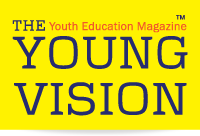
Demand for Western learning continues to grow in China
 The number of parents selecting a local private school that offers an international education, teaches in the English language, and enables students to achieve globally-recognised qualifications is growing in many countries of the world, but none more so than in China.
The number of parents selecting a local private school that offers an international education, teaches in the English language, and enables students to achieve globally-recognised qualifications is growing in many countries of the world, but none more so than in China.
This growth is being fuelled by the substantial increase of an affluent middle-class who can afford private education for their children, coupled with increasing aspiration by parents to prepare their children well for good higher education and career opportunities in the west.
Today, 60% of all children enrolled in China’s international schools are Chinese citizens. It is a figure that is predicted to rise significantly as more Chinese-owned private international schools, which are allowed to admit local children, are established.
According to ISC Research, which supplies data, intelligence and market expertise for international and bilingual school development, the number of International Chinese-owned Private Schools (ICPS) has grown by an average 13.6% per annum since 2012, and the enrolment of Chinese students attending these schools has grown by 17.2% during the same time.
In Shanghai, over 41,000 Chinese children currently attend the International Chinese-owned Private Schools (ICPS) throughout the city, paying an average tuition fee of USD $17,229 for the opportunity. Most of these schools are delivering a dual curriculum programme (a foreign curriculum blended with the local Chinese curriculum) in a bilingual environment where subjects are learnt in Mandarin and English. In Beijing, 32,000 Chinese children are doing the same. The city with the largest enrolment is Guangdong, where 45,600 Chinese children currently attend its 103 ICPS schools. Also seeing significant growth of such schools and student enrolment are Jiangsu, Zhejiang and Shandong.
It’s a market that ISC Research says will continue to develop in China as the country’s expanding affluent population demands a more western style of learning for their children. “Over the next 15 years, the number of high-income families who will be able to afford private education is expected to double in several of China’s top-tier cities,” says Grace Shi, Head of China research based in the ISC office in Shanghai. “Many ICPS schools are under development in response to this, particularly in Guangdong and Zhejiang but also in cities where international education for local Chinese children is only just emerging, such as Sichuan, Shaanxi and Fujian,” she adds.
Warren Johnston is Headmaster and Chief Academic Officer at HD Ningbo, a Chinese bilingual school in Ningbo. HD also has bilingual schools in Shanghai and Beijing and a new school will open in Qingdao this August (2018). Other HD schools in tier 1 and 2 cities are due to follow. He explains the demand from Chinese parents: “Today, parents in many tier 1, 2 and even 3 cities in China, are looking for more choices when it comes to education for their children. Bilingual schools are one of these choices,” he says. “At HD Ningbo, we blend the best of international education philosophy with Chinese curriculum. This allows us to provide Chinese students, who may not have a foreign passport and who aim to be going abroad for university, the opportunity to have a bilingual education and retain their Chinese language and culture. Through this bilingual, bicultural approach, we aim to nurture global Chinese citizens; individuals who retain a profound respect and knowledge of their own Chinese culture and language, while also possessing the linguistic skills, cultural awareness, and qualifications to be successful in an increasingly globalised environment.”
Grace Shi adds that it used to be that only tier one cities that were options for international education in China. “But today we are working with investors and developers in many more cities around the country and these options continue to expand,” she says.
Such developments include partnerships between Chinese investors and foreign schools, most notably, British independent schools. Due to open this year (2018) are Durham School in Tianjin, St Bee’s School in Shenzhen, Adcote School in Shanghai, and Wycombe Abbey International in Hangzhou; all independent school brands originating from Great Britain.
“We are introducing a steady stream of Chinese investors to independent schools that have international development aims,” says Grace. “Although the heritage of the British independent school attracts many investors from China, others are also now looking to the quality school brands from Australia, Canada and the United States to bring alternative learning options and direct pathways to their best universities, to aspirational families in China.”
Source: ISC Research
